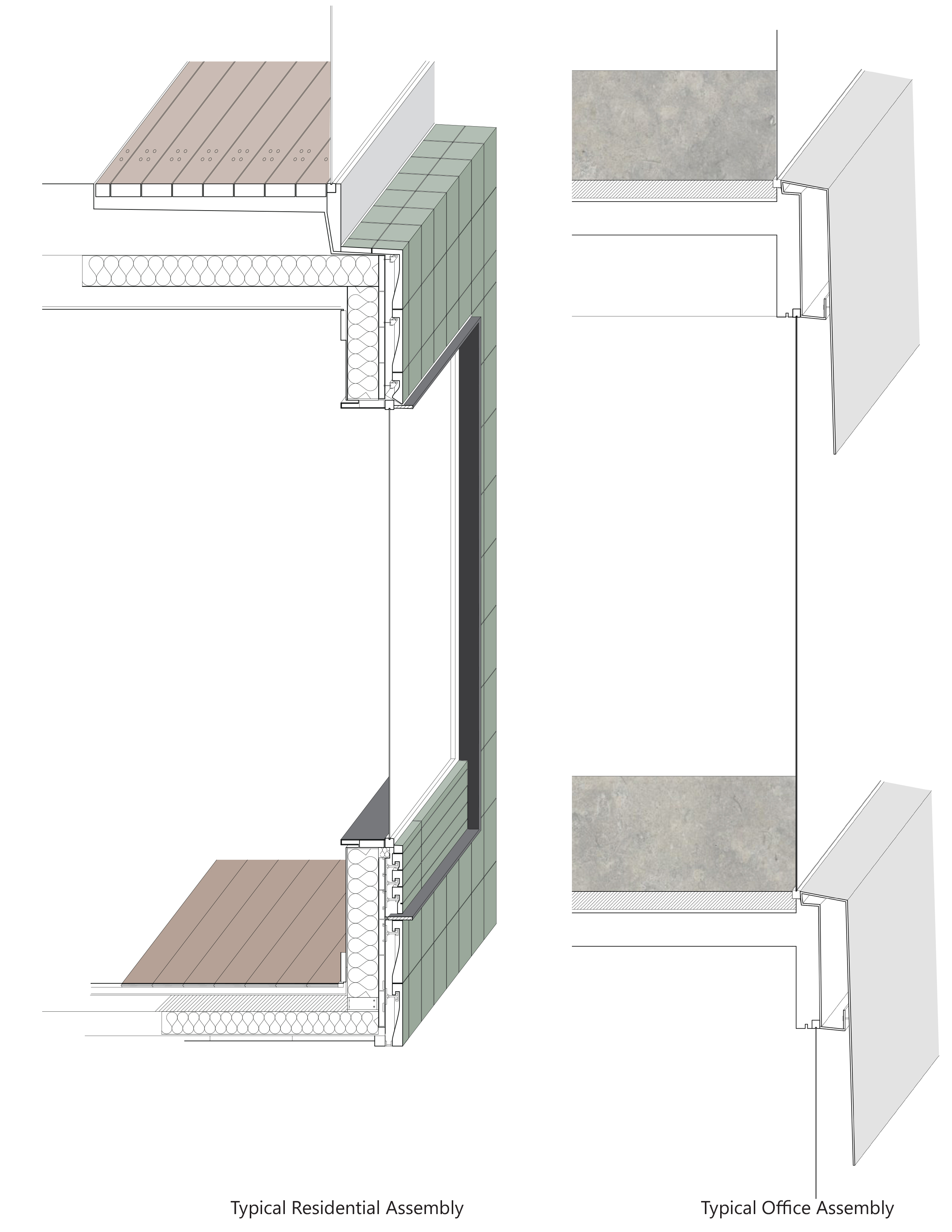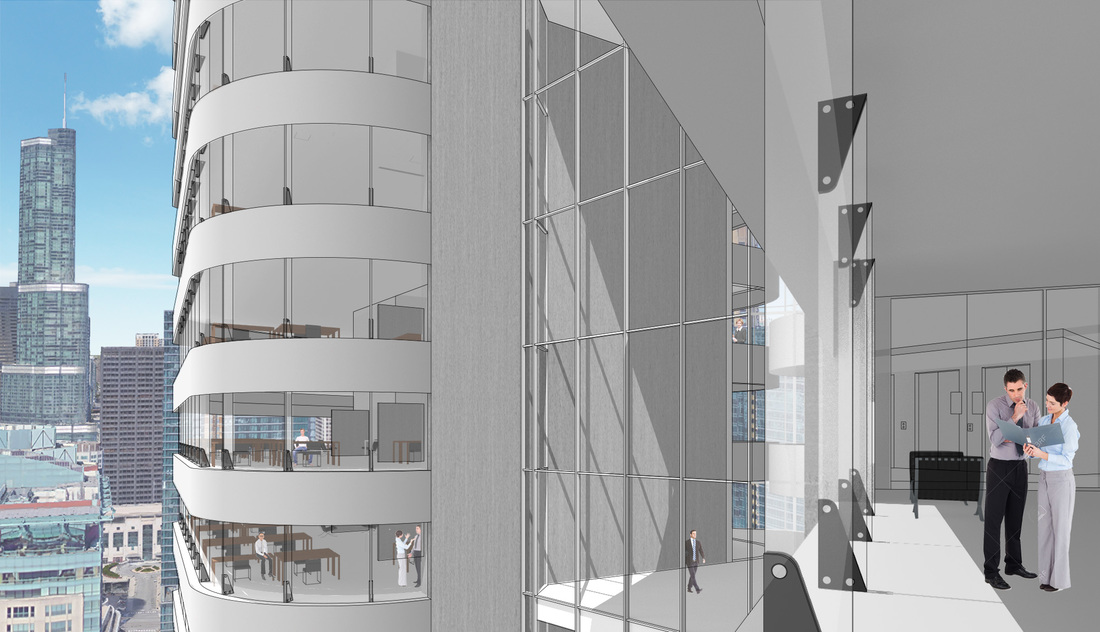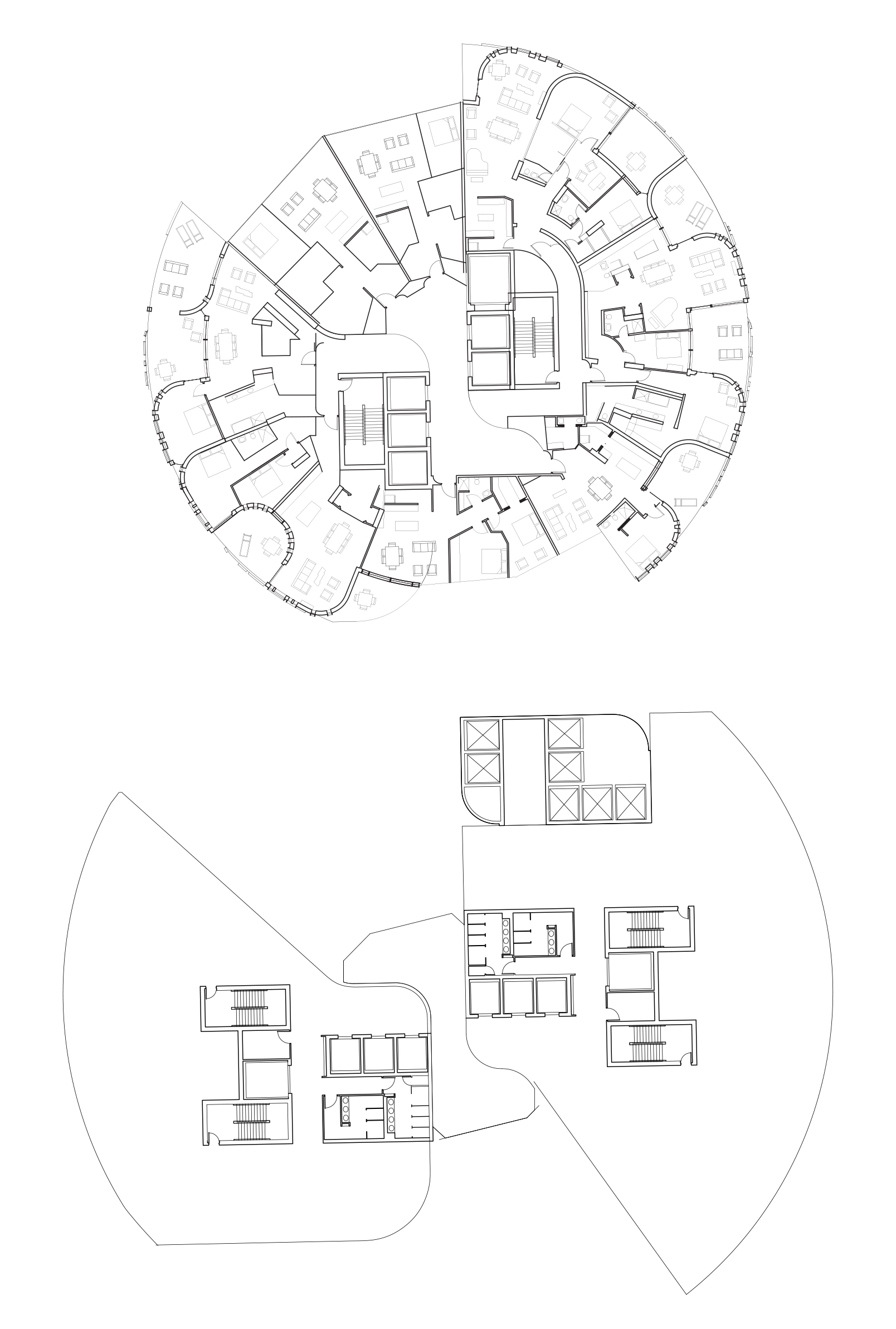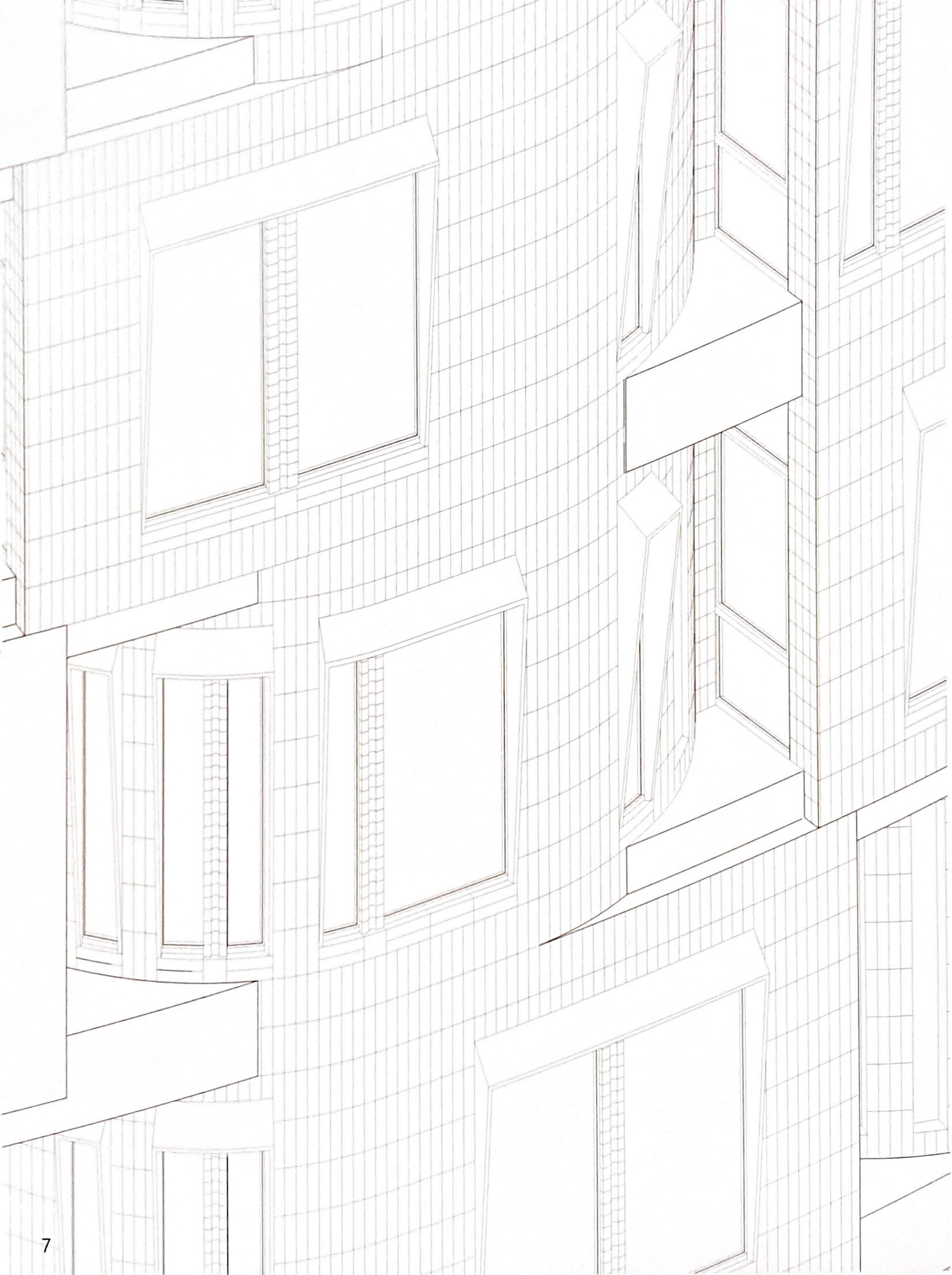Haptic Supertall
![]() Today’s skyscrapers typically lack texture, suggesting ultimate smoothness in glass and without significant relationship between interior and exterior. I propose an approach that weaves in and out, sweeping foreground back
into residential units, and placing texture at the top of the building to intensify the diagram. The site is a portion
of Chicago that currently lacks identity and community; that of Calatrava’s failed Chicago Spire.
In order to mitigate the extreme height of a 120 story building, a new ground is introduced at floors 40-55.
This elevated public space is programmed as a viewing deck and gathering space.
The green tile at the top half of the building represents a golden age in textural American architecture, harkening to Chicago’s fireplace surrounds of the early 20th century. The office space that occupies the middle floors
is clad in horizontal zinc panels that sharply contrast with the surfaces of the upper residential area. Destination
retail inhabits the lower floors, where the tower receives sinuous lines of influence (including water taxi) that split
the core of the building in two, yielding open space for the offices above.
Today’s skyscrapers typically lack texture, suggesting ultimate smoothness in glass and without significant relationship between interior and exterior. I propose an approach that weaves in and out, sweeping foreground back
into residential units, and placing texture at the top of the building to intensify the diagram. The site is a portion
of Chicago that currently lacks identity and community; that of Calatrava’s failed Chicago Spire.
In order to mitigate the extreme height of a 120 story building, a new ground is introduced at floors 40-55.
This elevated public space is programmed as a viewing deck and gathering space.
The green tile at the top half of the building represents a golden age in textural American architecture, harkening to Chicago’s fireplace surrounds of the early 20th century. The office space that occupies the middle floors
is clad in horizontal zinc panels that sharply contrast with the surfaces of the upper residential area. Destination
retail inhabits the lower floors, where the tower receives sinuous lines of influence (including water taxi) that split
the core of the building in two, yielding open space for the offices above.
![]()
 Today’s skyscrapers typically lack texture, suggesting ultimate smoothness in glass and without significant relationship between interior and exterior. I propose an approach that weaves in and out, sweeping foreground back
into residential units, and placing texture at the top of the building to intensify the diagram. The site is a portion
of Chicago that currently lacks identity and community; that of Calatrava’s failed Chicago Spire.
In order to mitigate the extreme height of a 120 story building, a new ground is introduced at floors 40-55.
This elevated public space is programmed as a viewing deck and gathering space.
The green tile at the top half of the building represents a golden age in textural American architecture, harkening to Chicago’s fireplace surrounds of the early 20th century. The office space that occupies the middle floors
is clad in horizontal zinc panels that sharply contrast with the surfaces of the upper residential area. Destination
retail inhabits the lower floors, where the tower receives sinuous lines of influence (including water taxi) that split
the core of the building in two, yielding open space for the offices above.
Today’s skyscrapers typically lack texture, suggesting ultimate smoothness in glass and without significant relationship between interior and exterior. I propose an approach that weaves in and out, sweeping foreground back
into residential units, and placing texture at the top of the building to intensify the diagram. The site is a portion
of Chicago that currently lacks identity and community; that of Calatrava’s failed Chicago Spire.
In order to mitigate the extreme height of a 120 story building, a new ground is introduced at floors 40-55.
This elevated public space is programmed as a viewing deck and gathering space.
The green tile at the top half of the building represents a golden age in textural American architecture, harkening to Chicago’s fireplace surrounds of the early 20th century. The office space that occupies the middle floors
is clad in horizontal zinc panels that sharply contrast with the surfaces of the upper residential area. Destination
retail inhabits the lower floors, where the tower receives sinuous lines of influence (including water taxi) that split
the core of the building in two, yielding open space for the offices above.






